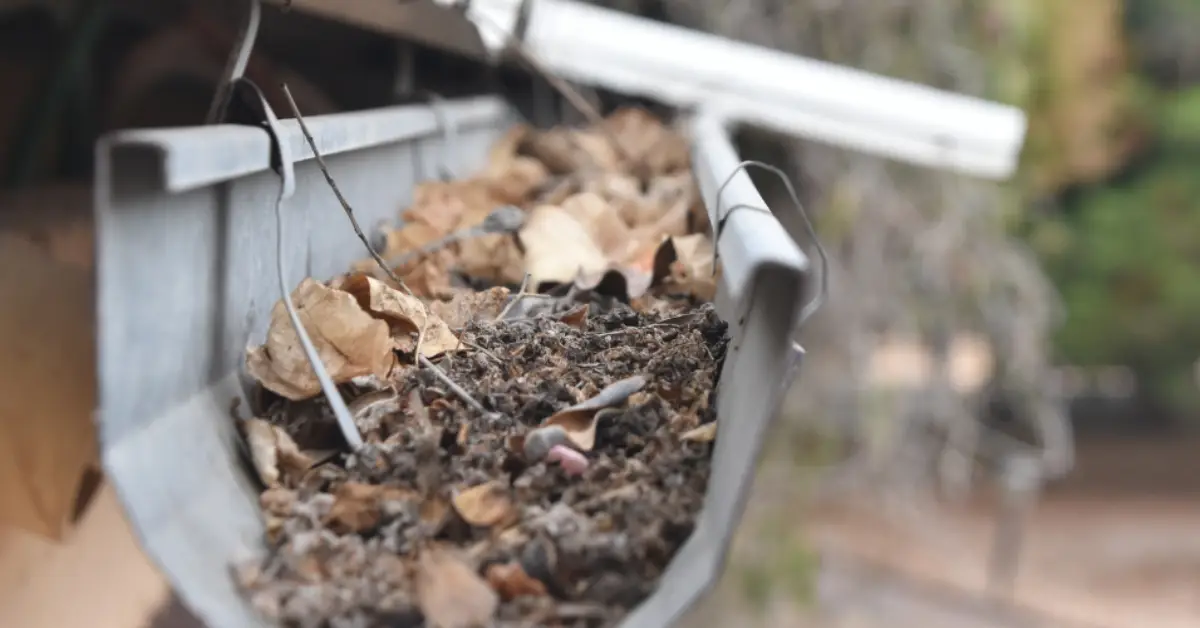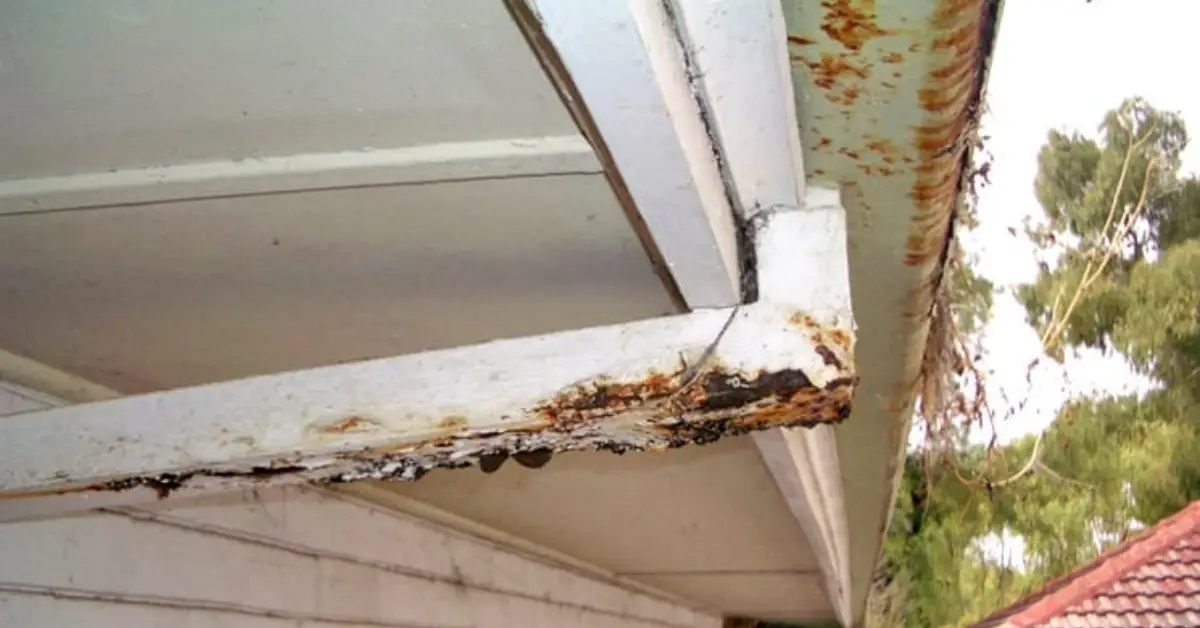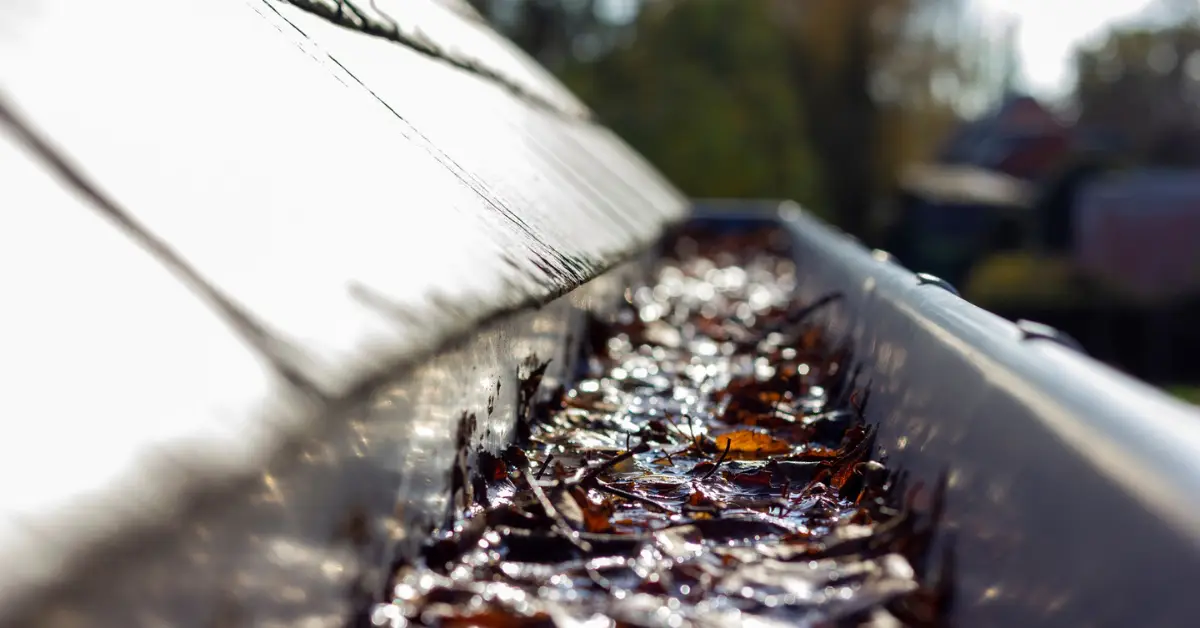7 Warning Signs Your Gutters Are Begging for a Cleaning
Last fall, I got a call from a homeowner in my neighborhood who sounded completely panicked. Overnight rain had turned into a mini waterfall spilling straight off his roof, flooding the flowerbeds and soaking the basement wall. The culprit? Gutters so packed with leaves and dirt they’d turned into a dam.
I’ve seen this story play out more times than I can count in my twenty years around homes and roofs. Most people don’t think about their gutters until something goes wrong — and by then, the damage is already done. The truth is, your gutters are one of the quiet heroes of your house. They keep water from seeping into walls, protect the foundation, and stop mold from creeping into places you’ll never want to see.
If you’ve noticed water dripping where it shouldn’t, plants growing out of your gutters, or even paint starting to peel near the roofline, those are more than small annoyances — they’re warning signs. In this guide, I’ll walk you through seven clear signals that your gutters need cleaning, before those little problems turn into repairs worth thousands.
So, before you grab a ladder or call in a pro, let’s make sure you know exactly what to look for. Have you checked your gutters lately?
Why Cleaning Gutters Isn’t Optional
I’ve met a lot of homeowners who treat gutter cleaning like a “someday” chore — something they’ll get to once the weather clears or when the next storm season hits. But here’s the truth: ignoring your gutters is one of the easiest ways to invite long-term, expensive damage to your home.
Your gutters do more than just collect rainwater. They’re your home’s first line of defense against moisture problems that can quietly destroy foundations, walls, and even your roof. When they’re working properly, water moves smoothly through the downspouts and away from your home. When they’re not, that same water seeps into places it shouldn’t — and that’s when the trouble begins.
Think of it this way:
- Every inch of rain that falls on a 1,000-square-foot roof can send over 600 gallons of water into your gutters.
- If that water has nowhere to go, it can pool around your foundation, leading to cracks and basement leaks.
- Trapped debris also adds weight, pulling gutters loose or bending them out of shape.
According to Home Depot, clogged gutters are one of the top causes of water damage in homes — and cleaning them twice a year is the simplest way to prevent thousands in repairs later.
In short: clean gutters protect your roof, your walls, and your wallet.
How to Know You’re Overdue

Let me ask you this — when was the last time you actually checked your gutters? If you can’t remember, chances are, it’s already been too long. Most people underestimate how quickly leaves, dirt, and even shingle grit can build up, especially after windy seasons or storms.
Here’s the general rule of thumb:
- Twice a year cleaning — once in spring, once in fall — keeps most homes safe.
- If you live under heavy tree cover or in an area with frequent rain, every 3–4 months is smarter.
- Notice overflow or sagging even after cleaning? That’s your signal to inspect for deeper blockages or drainage issues.
A few quick checks can tell you if you’re overdue:
- You spot water spilling over the sides during rain.
- There’s moss or weeds growing from the gutter edges.
- The gutter line looks warped or uneven when viewed from the ground.
- You find peeling paint or damp patches on your siding.
These aren’t minor aesthetic issues — they’re the early warnings that water is starting to work its way where it shouldn’t.
Sign 1: Water Overflowing From Gutters
If you’ve ever stood inside during a heavy storm and heard the sound of water gushing over the edge of your roof, that’s your gutter crying for help. Overflowing gutters are the most obvious sign of blockage — and one you should never ignore.
Why overflow happens:
- Debris buildup: Leaves, twigs, and dirt block the natural water path.
- Improper slope: Gutters should have a slight angle to guide water to the downspout — even a small imbalance can cause pooling.
- Clogged downspouts: Even if the top looks clear, debris can be packed inside the downspout elbow.
Here’s a simple way I recommend testing flow:
- On a dry day, run a hose into your gutter for a few minutes.
- Watch the downspout — if water backs up or trickles slowly, you’ve got a clog.
- If water spills over the sides instead of draining smoothly, it’s time for a deep clean. If you’ve already spotted overflow and want to handle it before it turns into a drainage disaster, check out these easy ways to unclog your gutters before they flood your home — it’s a quick guide that walks you through safe, simple fixes you can do in a single afternoon.
Overflowing water doesn’t just look bad — it can soak your siding, erode soil, and even weaken your home’s foundation over time. Think of each overflow as a red flag waving for attention.
Sign 2: Sagging or Pulling-Away Gutters
I’ve lost count of how many times homeowners call me saying, “My gutters look like they’re about to fall off — is that normal?” The short answer: no, it’s not. When your gutters start to sag or pull away from the roofline, that’s a clear signal that something’s gone wrong beneath the surface.
Here’s what usually causes it:
- Too much weight: Wet debris, standing water, or ice buildup puts stress on the brackets.
- Loose or failing fasteners: Screws or hangers can loosen over time, especially if wood fascia has softened from moisture.
- Poor drainage design: Sometimes, gutters aren’t installed with enough support across longer runs.
If you notice a visible dip or gap between the gutter and the roof, don’t wait. Once they pull away, water seeps behind them, damaging the fascia board — which can quickly spiral into rot or even interior leaks.
Quick DIY check:
- Step back from the house and look along the gutter line — any bends or uneven spots?
- Gently press under the gutter lip with a broom handle; if it moves easily, the fasteners are failing.
If you see significant sagging, it’s safer to call a professional. According to Obie Insurance, ignoring sagging gutters can lead to structural strain on your roofline and costly repairs later.
Sign 3: Plant Growth or Visible Debris Build-Up
If you can see little plants sprouting from your gutters, that’s not “nature being cute” — that’s a maintenance alarm bell. Over time, dirt, leaves, and moisture create the perfect potting mix for seeds carried by the wind. Once roots take hold, they trap even more debris, and your gutters basically turn into hanging flower beds.
Why it happens:
- Seeds fall into damp buildup and germinate easily.
- Constant moisture keeps the roots alive, even during dry spells.
- The added weight strains your brackets and clogs your downspouts completely.
You don’t even have to climb a ladder to spot the issue.
From the ground, look for:
- Green shoots or moss peeking over the edges.
- Dark, damp lines under the eaves.
- Overflowing debris or visible clumps during rain.
This kind of buildup means water isn’t draining properly — and your gutters are well past due for a deep clean. Regular maintenance can prevent this, but once you see plant growth, it’s time for a reset rather than a quick sweep. While you’re tackling gutter buildup, don’t overlook your roof — moss and algae growth up there can cause just as much trouble. These roof cleaning hacks to prevent moss and save on expensive repairs will help you keep both your roof and gutters in top shape year-round.
Sign 4: Stains, Mildew, or Rust on Exterior Walls

Sometimes, the damage shows up before you even realize your gutters are clogged. If you notice dark streaks, paint peeling, or rust marks running down your siding, it’s usually a sign that water is overflowing or backing up where it shouldn’t.
Here’s what’s really happening:
- Overflowing gutters push water against the walls, and that constant exposure wears down paint and caulk.
- Moisture trapped behind siding can lead to mildew or even rot — especially on wooden structures.
- Rust on metal gutters means the protective coating has worn off, usually from long-term neglect.
Why this matters: it’s not just about curb appeal. These stains tell you your home’s protective layers are breaking down. Once moisture gets in, insulation and drywall can start absorbing it, leading to mold growth inside your home.
Even small patches of discoloration mean you should inspect your gutters immediately. A quick cleaning can save you from needing full siding repairs later.
Sign 5: Pooling Water Near the Foundation
This is the one I tell homeowners to take most seriously. Water pooling around the base of your house might seem harmless at first, but it’s one of the most damaging effects of clogged gutters. When downspouts can’t carry water away, it collects near the foundation, slowly seeping into the soil and creating hydrostatic pressure against your basement walls.
Over time, that can lead to:
- Foundation cracks or settling — especially in older homes.
- Basement leaks and damp smells after rain.
- Erosion of landscaping and soil displacement near the house perimeter.
You can easily check for this after a storm:
- Walk around your home and look for muddy patches or puddles near the walls.
- Check if mulch or soil has washed away near the downspout ends.
- Watch for water marks on the foundation itself.
As Rapid Roofing points out, pooling water is often the last warning before costly damage sets in. Once the ground starts absorbing moisture near your home, the pressure it creates can push water through tiny cracks — leading to basement flooding and structural weakening that’s not easy to fix.
So, if you spot even a small puddle that doesn’t dry quickly after rain, don’t ignore it. Your gutters might be trying to tell you something important.
Sign 6: Increased Pest or Insect Activity

If you’ve started noticing more mosquitoes buzzing near your home or the occasional bird or rodent around your roofline, don’t dismiss it as just a seasonal thing. Debris-filled gutters are a perfect hideout for pests — warm, damp, and full of organic material. Once they move in, they’re not leaving anytime soon.
Here’s why it happens:
- Standing water from clogged gutters becomes a breeding ground for mosquitoes.
- Wet leaves and dirt attract ants, termites, and even roaches looking for moisture.
- Nesting debris invites birds, squirrels, and wasps to set up camp near your eaves.
When I inspect homes, I often find bird nests or spider webs tucked into downspout openings — small signs that pests have already discovered a safe home there. If you hear scratching, chirping, or buzzing around your roofline, it’s time to take a closer look. And if you’ve noticed more critter activity near your yard lately, it might not just be the gutters — you could also be dealing with hidden ground pests. Learn the warning signs of snake holes in your yard so you can handle the problem before it spreads.
What you should check:
- Look for nests or insect swarms near the ends of downspouts.
- Watch for droppings or chewed leaves under the gutters.
- Check for bite marks or wasp activity near the eaves.
Cleaning out debris and keeping gutters dry breaks the cycle — no moisture, no pests. It’s that simple. The longer you leave standing water, the faster your home becomes an open invitation to unwanted guests.
Sign 7: It’s Been Too Long Since the Last Cleaning
If you can’t remember the last time you cleaned your gutters, that’s already your sign. Gutter maintenance isn’t something to guess — it’s about keeping a consistent rhythm before problems start stacking up.
Here’s a good rule to live by:
- For most homes, twice a year (spring and fall) is ideal.
- If your home sits under heavy tree cover, aim for every three months.
- In dry climates with minimal foliage, once a year might be enough — but always check after storms.
Regular cleaning keeps your gutters light, clear, and functional. But more importantly, it prevents all the issues you’ve read above — overflow, rot, pests, and even structural strain.
To stay on top of it, set up a simple reminder system:
- Add a recurring note on your phone or calendar before each rainy season.
- Tie your cleaning schedule to something seasonal — like daylight savings or fall yard cleanup.
- If you hire help, keep a small log with dates — so you always know when it’s next due.
You don’t need to obsess over it; just make sure it’s not forgotten. A clean gutter doesn’t make noise or mess — and that’s the best kind of maintenance there is.
What to Do After Spotting These Signs

Once you’ve identified any of these red flags, don’t panic — but don’t wait, either. Gutter problems escalate quickly because water has a way of finding the weakest spot in your home’s defenses.
Here’s what I recommend you do next:
1. Decide Between DIY and Professional Cleaning
- If you’re comfortable with ladders and basic tools, a light cleaning is doable.
- But if your gutters are high, heavily clogged, or showing damage, it’s safer to hire a pro.
- Professionals can also spot early signs of roof or fascia damage that most homeowners miss.
2. Gather the Right Tools & Follow Safety Basics
Before you start:
- Use a sturdy ladder, non-slip shoes, and a bucket for debris.
- Wear work gloves and goggles — gutter muck can hide sharp metal or insects.
- Rinse with a garden hose from one end to check flow after cleaning.
3. Prevent Future Problems Before They Start
- Install gutter guards to block leaves while allowing water to pass through.
- Trim tree branches hanging over your roof to reduce debris.
- Flush downspouts every few months to prevent buildup.
Even a quick routine like this once or twice a year can save you from foundation cracks, roof leaks, and pest invasions. The key is consistency — your gutters don’t need attention every week, but they do need it before it’s too late.
So, what’s your next move? Will you check your gutters yourself this weekend, or call a pro to take a look before the next storm rolls in?
Homeowner Action Plan: Keep Gutters Clean Year-Round
Let’s bring it all together. By now, you’ve seen how easily clogged gutters can go from “out of sight, out of mind” to “how did this leak get here?” But the good news is, staying ahead of the problem doesn’t take much — just awareness, a simple routine, and a few smart habits.
Here’s a quick recap of the 7 warning signs your gutters need cleaning:
- Water overflowing during rainstorms
- Gutters sagging or pulling away from the roofline
- Plants or moss growing out of the gutters
- Stains, mildew, or rust on exterior walls
- Pooling water near the foundation
- Increased pest or insect activity
- It’s been too long since the last cleaning
If you can spot even one or two of these, it’s your signal to act. Don’t wait until your next home repair turns into a weekend project gone wrong.
Try this simple seasonal cleaning schedule:
- Spring: Clear out winter debris and check for frost or storm damage.
- Summer: Quick rinse to remove dust and pollen buildup.
- Fall: Deep clean after leaves drop; trim back nearby branches.
- Winter: Inspect after heavy snow or ice; confirm gutters are draining properly.
You can print this schedule and keep it in your garage or set digital reminders in your phone. The idea is to make cleaning a habit — not a reaction to damage.
At Build Like New, we believe small, consistent maintenance is what keeps homes strong and stress-free. So before the next rain rolls in, take ten minutes, walk around your home, and give your gutters a quick look.
What about you? When was the last time you cleaned your gutters? Drop your answer or questions below — I’d love to hear how you handle gutter upkeep in your area.
Disclaimer: The information shared in this article is for general home maintenance guidance only. Always follow safety precautions when working at heights, and consult a licensed professional for repairs or inspections beyond your skill level. Build Like New is not liable for any damages or injuries resulting from improper maintenance or use of tools mentioned.


